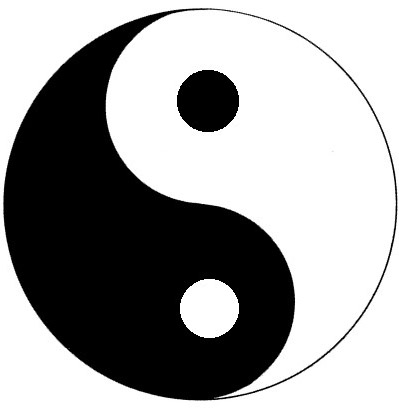
I’m a lifelong learner. I love to learn. As a spiritual teacher, I also love to impart wisdom and inspire people to see and be more.
My interest is in human transformation. My spiritual education in mindfulness, prayer and wisdom has included immersion into Taoism and Qi Gong in China, Buddhism in Thailand and Australia, Tantra, Qabbalah and biblical theology including three years spent studying in Jerusalem amongst other things.
There is so much to learn about human consciousness, about being in the world but not of it, connected but disconnected, attached but detached. This grand cosmic dance has no end.
Tantra intrigues me as a philosophy because it experiences and embraces, activates and liberates; it forces itself through life like the sword of a warrior spirit, and ends up transcending it all. How can one describe the indescribable, indivisible and ineffable, interpret the all-embracing yet mysterious.
What is Tantra?
Original Tantra comes from little-understood Sanskrit texts originating from 6th to the 13th centuries in India. The doctrines and principles involve mantras, meditation, yoga and rituals. In a Western sense, Tantra has come to symbolise a philosophy of liberation through the body.
In Tantra, nothing is pure or impure in its essence. At his core, human beings are pure and innocent, it is only their essence that they forget. Original purity is sustained. There is nothing that one needs to achieve in the tantric path, nothing that one isn’t already. Essentially Tantra is a path about allowing, letting go of, discovering that which is already there to be revealed.
Roger Housden’s words describe the tantric path well:
“To become yourself is to evoke the presence of love. Sometimes it is visible as a trembling. Its presence is a third, felt in both lover and beloved, yet belonging to neither. It is not confined to any form, but it needs form to embody it.”
It is helpful when defining something to understand what it is not in order to understand more fully what it represents.
Buddhist philosophy posits that the world is an illusion. In Tantra, the world is very real. Buddhist philosophy is transpersonal, beyond the limits of personal identity. Desires are seen to be pointless—merely illusions that distract us. So we must suppress desires and transcend the body, thus surrender to pure consciousness.
For Tantra, Divinity can be experienced in the here and now. Sexuality is not a path to the Divine, it is the Divine union. It is not something we seek, it is something we let go of. There is no destination in mind. It is not something we do, it is something we are.
Tantra offers a personal path to liberation via the body. At some point the body ceases to exist, most notably during the sexual act which can bring a person to transcendence, when they lose themselves, and there is no more ego. In fact in tantric sex, one becomes one’s partner so that nothing else exists except for this oneness.
In Tantra, the personal is Divine, not just the transpersonal. The personal is pure. In Buddhism, personal desires are viewed as impurities and sexual energy is seen as wasteful.
In Tantra like in Taoism, nature is dualist. The Taoists believe that reality is made up of polarity, Yin and Yang. Tantra believes that Shiva is the masculine God and Shakti is the feminine Goddess. The fundamental Taoist principle of Yin and Yang is pragmatic, scientific and rational in its approach. Whereas Tantra’s Shiva and Shakti are Divine archetypes. In China, there is little understanding or focus on Divinity, whereas in India where Tantra comes from, there is far more of a wide range of eclectic traditions recognising God in all things.
What is important to highlight within Tantra, is that the very make-up of reality is the God and Goddess energies. In Tantra, the body is therefore a temple to reach the divine. The sexual act is therefore the most sacred portal we can open to ascension, reaching and experiencing God and our Divine self.
In Tantra, we embody the sacred masculine and feminine energies within our body. All our desires are to be accepted and embraced. The Western paradigm of judgement, blame, shame and guilt have no place in Tantra.
The Yogic path of celibacy and raising up the kundalini energy into our head and crown chakra, is misplaced within Tantra where the energy is contained within the Divine union, already a completed circuit.
 Tantra teaches that all is welcome. That which judges, divides and separates us, is the rejection of wholeness. Tantra is about being limitless and ineffable. That can only come via being beyond control. The moment one tries to control something, one has lost Tantra.
Tantra teaches that all is welcome. That which judges, divides and separates us, is the rejection of wholeness. Tantra is about being limitless and ineffable. That can only come via being beyond control. The moment one tries to control something, one has lost Tantra.
How does one become undivided? Osho taught one has to stop condemning, stop controlling. The moment this or that is good or bad, pure or impure, holy or unholy, one is judging.
To be undivided is to be in a state of pure acceptance, non-judgment. Such is the state one can only reach via sexual union, where one becomes indivisible—no longer separate. United in love. United in Divinity. This is living, breathing and being Tantra.
Relephant:
Tantra Isn’t About Sex (Except When it is).
~
Author: David Arenson
Editor: Travis May
Image: Flickr/Helga Weber, Alysscia Scobee











Read 1 comment and reply